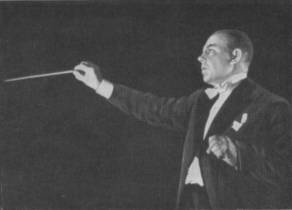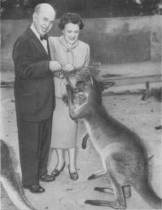
Nikolai Andreyevich Malko (4 May 1883 – 23 June 1961) Malko was born in Brailiv, Vinnytsia oblast, Ukraine. His father was Ukrainian, his mother Russian. In 1906 he completed his studies in history and philology at Saint Petersburg University. In 1909 he graduated from the Saint Petersburg Conservatory, where he had included Rimsky-Korsakov, Glazunov and Lyadov among his teachers. He published articles on music criticism in the Russian press and performed as a pianist and later a conductor. In 1909 he became a conductor at the Mariinsky Theatre and, six years later, the head conductor there. From 1909 he studied conducting in Munich under Felix Mottl. In 1918 he became the director of the conservatory in Vitebsk and from 1921 taught at the Moscow Conservatory. From 1921 to 1924 he shuttled between Vitebsk, Moscow, Kiev and Kharkiv, conducting in each of these cities. In 1925 he became a professor of the Leningrad Conservatory. He became conductor of the Leningrad Philharmonic Orchestra in 1926 and conducted the world première of the Symphony No. 1 by his pupil Dmitri Shostakovich that same year, and the premiere of Shostakovitch's Symphony No. 2, dedicated to him, in 1927. Malko also conducted the premiere of Nikolai Myaskovsky's 5th Symphony. Myaskovsky's 9th Symphony was dedicated to Nikolai Malko. He was succeeded as director of the Leningrad Philharmonic by his pupil Yevgeny Mravinsky in 1928, and continued to teach at the Conservatory. In 1929, invited to appear in the West, he and his wife left the Soviet Union, and did not return for thirty years, until a U.S. State Department-sanctioned invitation from the Soviet Ministry of Culture brought him back to conduct in Moscow, Leningrad, and Kiev. Once in the West, Malko lived in Vienna, Prague and in Copenhagen, where he helped establish the Danish National Radio Symphony Orchestra, with the title Permanent Guest Conductor. With the outbreak of World War II in 1940, Malko settled in the United States, where he also taught conducting. His thoughts on conducting technique were gathered together and published in a volume entitled, The Conductor and his Baton (1950); a handbook on conducting currently available in the United States (Elizabeth A. H. Green: The Modern Conductor, 1996) is explicitly based on the principles set forth in Malko's book. Malko recorded extensively for EMI in Copenhagen and then with the Philharmonia, in London. In 1951 he premiered Vagn Holmboe's 7th Symphony with the Danish Radio Symphony Orchestra. In 1954 he came to Britain as principal conductor of the Yorkshire Symphony Orchestra. In 1956 he moved to Australia, becoming chief conductor of the Sydney Symphony Orchestra following the hurried departure of Sir Eugene Goossens. In 1960, the Danish King Frederick IX named Malko a Knight of the Order of Dannebrog. Malko continued in his position as Musical Director of the Sydney Symphony Orchestra until his death in Sydney in 1961.
**************************

Jean Sibelius Symphony no 1 in E minor, Op. 39 Finlandia, Op. 26 Sydney Symphony Orchestra N.A. Malko 12.02.1960 (Live)
**************************
Запись из личной коллекции. | 
